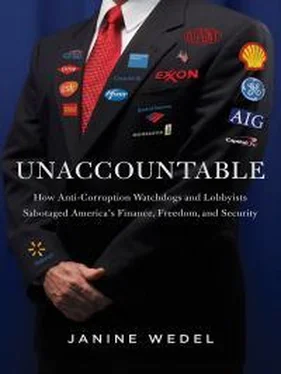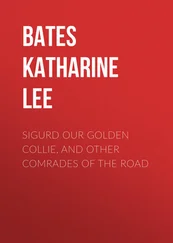• positively associated with the extent to which “government regulations are vague and lax” in a sample of 26 African countries (Lambsdorff and Cornelius 2000, cited in Johann G. Lambsdorff, “Consequences and Causes of Corruption,” Susan Rose-Ackerman, ed., International Handbook on the Economics of Corruption. Cheltenham, U.K.: Edward Elgar, 2006, p. 7);
• significantly associated with income inequality (Sanjeev Gupta, Hamid Davoodi, and Rose Alonso-Terme, “Does corruption affect income inequality and poverty?” Economics of Governance, vol. 3, issue 1, March 2002, pp. 23-45);
• significantly correlated with “higher military spending and higher arms procurement (as a share of either GDP or total government spending)” (Johann G. Lambsdorff, “Consequences and Causes of Corruption.” International Handbook on the Economics of Corruption, Susan Rose-Ackerman, ed. Cheltenham, U.K.: Edward Elgar, 2006, p. 33);
• possibly associated with negative GDP growth, though the many studies on this topic are often flawed methodologically and yield contradictory conclusions (according to Johann G. Lambsdorff, “Consequences and Causes of Corruption.” International Handbook on the Economics of Corruption, Susan Rose-Ackerman, ed. Cheltenham, U.K.: Edward Elgar, 2006, pp. 25-27); and
• possibly negatively correlated with democracy. (A long-standing argument is that democracy limits corruption by heightening competition for political positions and that, through elections, voters can hold officeholders accountable [Johann G. Lambsdorff, “Consequences and Causes of Corruption,” International Handbook on the Economics of Corruption, Susan Rose-Ackerman, ed. Cheltenham, U.K.: Edward Elgar, 2006, pp. 10-11]. Lambsdorff’s literature review yields the conclusion that only robust democracy limits corruption, and only over the long-term.) (For contextual analysis of the dynamics of democracy and corruption, see, for example, Donatella Della Porta & Yves Mény, eds., Democracy and Corruption in Europe . London: Pinter, 1997.)
87. Kalin S. Ivanov, “The Limits of a Global Campaign Against Corruption.” Corruption and Development: The Anti-Corruption Campaigns , Sarah Bracking, ed. New York: Palgrave Macmillan, 2007, p. 34.
88. This trend has been criticized by scholars who have examined how ranking and measurement using impact and outreach variables are being employed to judge the activities of organizations (John Clarke, “Performing for the public: doubt, desire, and the evaluation of public services,” Paul du Gay, ed., The Values of Bureaucracy. Oxford: Oxford University Press, 2005, pp. 211-232; Raymond June, “The discreet charm of flexians,” reviewing Janine R. Wedel’s Shadow Elite. Global Integrity, January 18, 2010 [http://www.globalintegrity.org/node/491]; Marilyn Strathern, Audit Cultures: Anthropological Studies in Accountability, Ethics, and the Academy . Oxford/New York: Routledge, 2000).
89. Although not attracting as much splash, an emphasis, both in scholarship and practice, emerged on “good governance” nearly in parallel and overlapping with the anti-corruption push. The World Bank publishes governance data on its website going back to 1996 (http://data.worldbank.org/data-catalog/worldwide-governance-indicators).
Also playing a role in corruption indices are governance indicators. Kaufmann and two other Bank economists developed six governance indicators (Daniel Kaufmann, Aart Kraay, and Massimo Mastruzzi, “Measuring governance using cross-country perceptions data.” International Handbook on the Economics of Corruption, Susan Rose-Ackerman, ed. Cheltenham, U.K.: Edward Elgar, 2006, pp. 56-57). These governance indicators consist of political stability and absence of violence, government effectiveness, voice and accountability, regulatory quality, rule of law, and control of corruption. See also Daniel Kaufmann, Aart Kraay, and Pablo Zoido-Lobaton, “Aggregating governance indicators.” World Bank Policy Research Working Paper 2195. Washington, D.C.: World Bank, 1999; and Daniel Kaufmann, Aart Kraay, and Massimo Mastruzzi, “Governance matters IV: governance indicators for 1996-2004.” World Bank Policy Research Working Paper 3630. Washington, D.C.: World Bank, 2005.
The Wall Street Journal and the Heritage Foundation, a Washington, D.C.-based conservative think tank, came out with their Index of Economic Freedom in 1995, according to the foundation’s website (http://www.heritage.org/index/about). The Cato Institution, a Washington, D.C.-based libertarian think tank, published its first Economic Freedom of the World report the same year (http://www.cato.org/economic-freedom-world). The Economist Intelligence Unit publishes a Democracy Index (https://www.eiu.com/public/topical_report.aspx?campaignid=DemocracyIndex12).
90. Hans Krause Hansen and Tony Porter, “What Do Numbers Do in Transnational Governance?” International Political Sociology, vol. 6, 2012, pp. 409-426.
91. Ibid., p. 415.
92. See Lakoff and Johnson for an analysis and typology of metaphors (George Lakoff and Mark Johnson, Metaphors We Live By. Chicago: University of Chicago Press, 1980, pp. 10-13).
93. Anthropologist Mark Hobart has pointed out that “when the metaphorical images so frequently used in development discourse to justify policies are removed, the degree to which many theories require modification or rethinking is remarkable” (Mark Hobart, An Anthropological Critique of Development: The Growth of Ignorance. London: Routledge, 1993, p. 6).
94. See Chapter 1 and Janine R. Wedel, Shadow Elite: How the World’s New Power Brokers Undermine Government, Democracy, and the Free Market . New York: Basic Books, 2009, pp. 1-15, 23-45.
95. For the definition of “representational juggling,” see: Shadow Elite , pp. 17-18, 129-135.
For budding flexians performing multiple roles across multiple spaces with multiple sponsors, see: Janine R. Wedel, Collision and Collusion: The Strange Case of Western Aid to Eastern Europe . New York: Palgrave, 2001, pp. 45-49.
96. With regard to Shleifer cited by corruption scholars, see, for example, World Bank, “Helping Countries Combat Corruption. The Role of the World Bank,” Poverty Reduction and Economic Management, The World Bank , September 1997, p. 20.
With respect to Shleifer’s definition of and approach to corruption, see, for instance, Andrei Shleifer and Robert W. Vishny, “Corruption.” Quarterly Journal of Economics , vol. 108, no. 3, August 1993. Regarding Shleifer’s activities: he played overlapping roles as he secured aid funding to reform Russia’s economy in the form of (highly unusual) noncompeted U.S. awards (with help from Larry Summers, his friend, coauthor, Harvard colleague, and, in the Clinton administration, a high U.S. Treasury official). See also endnote below.
97. With regard to Shleifer’s role in privatization, he helped design voucher privatization in Russia and was supported by U.S. aid awards for Russian reform to do so.
With regard to Shleifer’s personal investments, see: United States District Court, District of Massachusetts, United States of America, Plaintiff, v. The President and Fellows of Harvard College, Andrei Shleifer, Jonathan Hay, Nancy Zimmerman, and Elizabeth Hebert, Defendants, Civil Action No. OOCV11977DPW, September, 26, 2000. See also: Janine R. Wedel, Shadow Elite , op. cit., pp. 117-121.
In Russia, Shleifer and the other Harvard principal, Jonathan Hay, invested in the lucrative securities market; equities, aluminum, oil, and other companies (including the energy giant Gazprom); real estate; and mutual funds. They do not deny making these investments (United States District Court, op. cit., p. 30; see also, for example, Thanassis Cambanis, “US seeking $102m from Harvard pair.” Boston Globe, June 27, 2002). The U.S. Department of Justice concluded that “Harvard’s actions, instead of fulfilling their intended purpose of fostering trust and openness in the nascent mutual fund market, in fact involved exactly the type of favoritism and perceived and actual barriers to entry and success that the United States was spending hundreds of millions of dollars to dispel.”
Читать дальше












